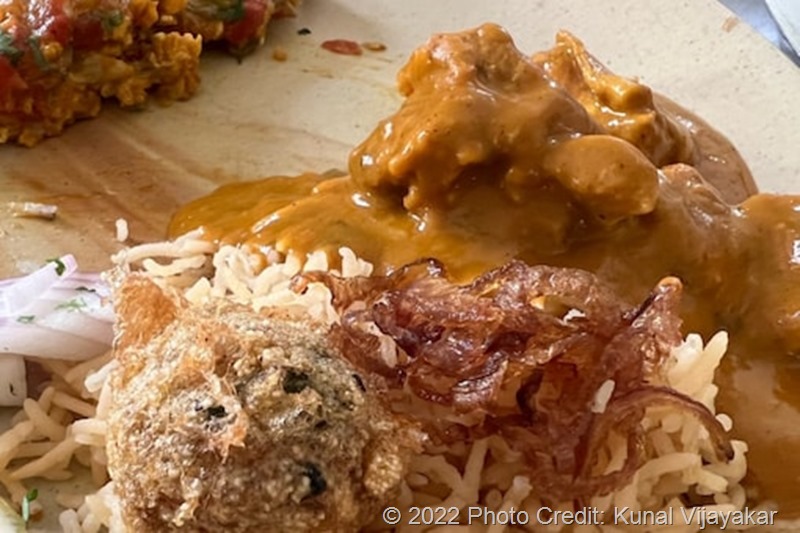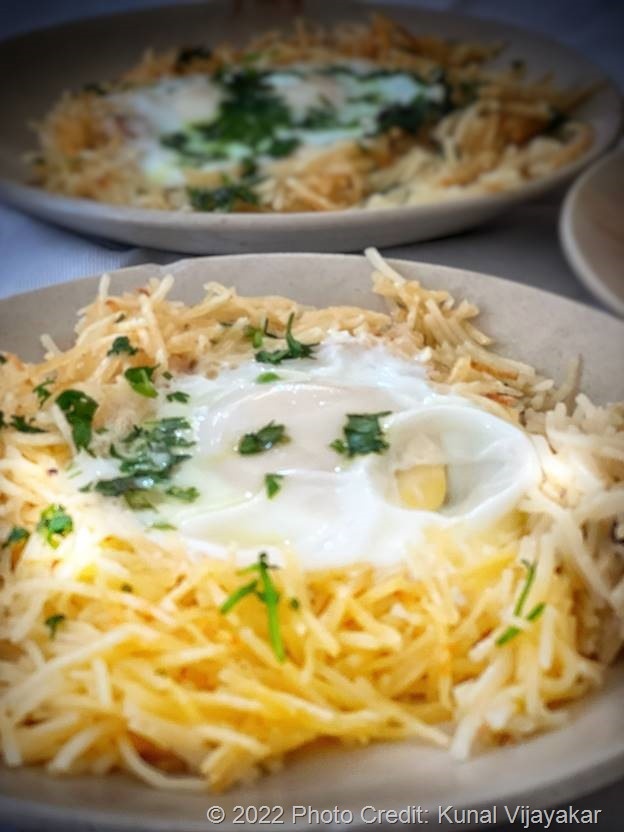Wednesday is Dhansak Buffet Day at the Ripon Club.
Article by Kunal Vijaykar | News18
The Ripon Club was founded in 1884 by Parsi stalwarts like Sir Phirozeshah Mehta, Jamshedji Tata and Sir Dinshaw Manackjee Petit, and to this day membership is reserved only for those born Parsi.
Whether we’re deploring the latest architectural travesty that’s been tacked onto the City’s skyline, or lamenting the closure of a cherished 100-year-old Irani Cafe, or maybe even bracing ourselves for whatever calamitously garish glass, granite and glossy storefront is being embedded into South Mumbai’s 19th Century streetscape, change is as inevitable as death and taxes, in today’s living.
Yet within one of those old Neo–Classical and Gothic Revival buildings that flank Old Esplanade Road (now Mahatma Gandhi Road), time stands still. As you enter the arched entrance, of NM Wadia Building, just off the bustling hawkers selling psychedelic mobile phone covers, pirated paperbacks and adult vibrators, a tranquil quiet engulfs you as your hands reach out for short but cold solid carved-marble balustrade.
You escalade three floors in the whimsical and creaky carved wrought-iron cage of a 100-year-old lift with polished wood panels and mirrors to reach the Ripon Club. Don’t get me wrong, it’s not the kind of club where you may land up for a demanding game of squash or tennis or even the kind where you might want to spend some calories doing laps in the swimming pool. It is the asylum of a privileged few who come to indulge in some rather heavy lunch and the sixth hour nap also called a siesta.
The Ripon Club was founded in 1884 by Parsi stalwarts like Sir Phirozeshah Mehta (president of the Indian National Congress and often called the father of municipal government in Bombay), Jamshedji Tata (founder of the Tata Empire) and Sir Dinshaw Manackjee Petit (philanthropist and founder of the first textile mills in India), and to this day membership is reserved only for those born Parsi. So, it’s often called “The Parsi Club”, or more affectionately, “The Dhansak Club”.
As you swing through the salon-like half-doors, you are welcomed into a vast open hall by old waiters and even older oil portraits of Parsee gentlemen. On one side, old mid-19th century Anglo-Indian Bombay Blackwood and marble topped tables, carved chairs, long sideboards mark the lunch area, while on the other side, amongst dusty bookshelves, rows of sink-in leather sofas and rattan seat planter-chairs beckon you for a post-lunch snooze.
As is tradition, most of the people lunching are neighbouring residents and businessmen and mainly lawyers and solicitors whose chambers are housed in nearby buildings all around the Bombay High Court, a stone’s throw away. The menu is an array of Parsi and old-world continental dishes.
Long forgotten ‘items’ like Cabbage Soup, Lemon Coriander Soup, Liver on Toast, Chicken Croquets, Steak Onion and Chips, Grilled Chicken, Cutlets and Chips, and Parsi staples like Salli Boti, Salli par Edu, Pulao Daal, Soti Boti Kababs (skewered pieces of meat and vegetables, egg fried) and sandwiches are offered on a table d’hôte menu typed up on a card paper with the club crest.
Normally, very few tables are occupied, but on a day when you find the dining hall full of people and the cacophony of cutlery and conversation which is way above the usual decibel levels, you realise it must be a Wednesday which is Dhansak Buffet Day.
Tehmtan Dumasia is the present caterer at the Ripon Club, though the club has had several caterers in all these years, some who have been disappointing, and some who have been exemplary. Tehmtan is in the latter category and I’ve known him and his food for many years.
On this particular Wednesday or Dhansak Day that I visited “The Club” as a guest for lunch, I had starved myself. I wanted to do full justice to the Dhansak.
We settled down at one of the longish spacious tables since we were six of us. The chairs all had arms, something I sorely miss in new restaurants with space issues. Old cutlery was laid out on a white starched damask tablecloth. The menu card was on a wooden standee. My host had already ordered bottles of chilled Raspberry Soda. Bright sunlight streamed in from the windows, I could see the battlements and crenels of the castle like Bombay University building across the road and in the skyline the Gothic Rajabai Clock Tower announce that it was time for Dhansak.
First course, we ordered a few portions of Akuri on Toast. Although Akuri is a breakfast specialty, I am happy to eat these masala scrambled eggs anytime of the day. On a crisp toast came lathered a creamy portion of spicy Akuri made with fried onions, tomatoes, green chillies, coriander and spices.
As if these eggs were not enough, we ordered a few portions of Salli-Par-Edu. Runny sunny side up fried eggs cooked on crisp potato straws garnished with green chillies and coriander.
Then a portion of Russian Patties. It’s an eclectic mixture of shredded boiled chicken, chopped chillies, coriander, lots of cheese and béchamel stuffed inside mashed potato and egg fried. It’s hard to decipher where the European influence ends and where the Indian influence starts.
While the Dhansak was being laid out on the buffet, my host ordered a portion of Aleti Paleti, which is offal (kidney, liver, gizzard) and potato chopped into small pieces and cooked with onion, tomato and masalas.
Having lined ourselves with these appetisers, we headed to the long dark-wood buffet table at the other end of the long hall, where under domed chaffing dishes lay Browned rice, mutton Dhansak and kababs with the ubiquitous kachumber.
A small queue was forming and we rushed to get to the top of it. With our plates full we headed back to the table. It’s nearly impossible to get a good Mutton Dhansak in the city. Ideal Corner at Gunbow Street (Rustom Sidhwa Marg), Mocambo (Phirozeshah Mehta Road), and Café Universal (Fort Market) serve some of the best Dhansak, I have eaten.
My Mutton Dhansak was served exactly the way I like it. Less rice and more Dal. The Dal was dark, and brawny. A thick spicy blend of, Chana Dal, red Masoor Dal and brown Masoor Dal with potato, tomato, brinjal, pumpkin and fenugreek leaves, all mashed together with a classical Dhansak Masala. Served with caramelised rice with fried onions served with ping-pong ball sized egg-fried spicy Kheema Kababs.
With a generous squeeze of fresh lime and a spoonful of onion, tomato, green chilly kachumber, I stirred in brown rice into this full-bodied robust Dal with chunky tender pieces of meat. A hush fell on our otherwise loquacious table, as each one started digging in to the Dhansak. An absolutely unbecoming meal for a warm Mumbai afternoon, but nonetheless intensely satisfying.
All that was left to be done was find some space in the stomach for some Lagan-nu-Custard and then find some space on one of those beckoning planter chairs to pass out for the rest of the afternoon.
Kunal Vijayakar is a food writer based in Mumbai. He tweets @kunalvijayakar and can be followed on Instagram @kunalvijayakar. His YouTube channel is called Khaane Mein Kya Hai. The views expressed in this article are those of the author and do not represent the stand of this publication.


